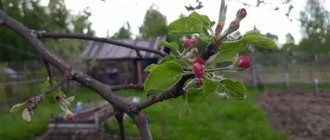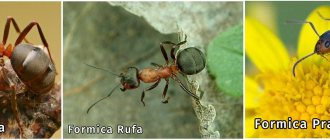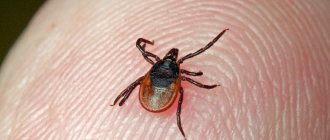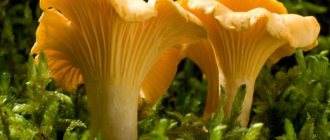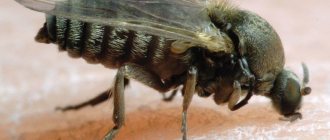Before a new butterfly appears, it undergoes a certain cycle of metamorphosis with a larva and a caterpillar. This is simply an incredible transformation mechanism developed by nature itself. For a caterpillar to turn into a butterfly, it is digested using enzymes produced by hormones. Then the sleeping cells (similar to stem cells) turn into body parts of the future insect.
Butterfly
When the insect is fully formed, it is time to leave the already cramped bed.
By the way, the shortest life expectancy of butterflies, depending on the species and, naturally, luck, ranges from a couple of hours to several days; during this time, some individuals do not even have time to eat, so as not to waste time. After the cozy cocoon is left, the butterfly sits for some time until the rumpled wings dry out and straighten out under the influence of hemolymph. The warmth of this liquid makes the insect's wings the way we are used to seeing them - hard and beautifully colored. Now they acquire their permanent color and their graceful owner is ready to find a partner and reproduce.
By the way, some species go through these stages, from birth to transformation into an adult winged insect, in three whole years, like the Odorous Woodborer, which feeds on hard-to-digest food - wood.
Interesting Facts
The origin of the word “butterfly” in Orthodox countries comes from the words “old woman” or “grandmother”, because Since ancient times, people have represented these insects as the souls of dead people. This belief still exists to this day in villages and villages in the Russian outback.
The largest butterfly is the South American tropical moth or tisania Agrippina, its wingspan is 28 cm; in Russia, the Maaka swallowtail (up to 13.5 cm). The smallest is the baby moth, living on the Canary Islands; its size barely reaches 2-4 mm.
A butterfly, flying from flower to flower, can cover up to 10 km in 1 hour, thus moving to the place where it will lay eggs.
One of the most amazing butterflies, Greta, amazes with its transparent wings, through which the entire surrounding world is visible.
Pupa stage
The caterpillar's saliva contains a special secretion that allows it to harden in air, forming a silky thread. With the help of this substance, it is fixed on the branch upside down and begins to wrap itself around its thread. After the cocoon around her body is woven, she sheds again, this time completely, her head even falls off.
When the cocoon shell becomes hard, the pupal stage begins
The pupa is not mobile, so it is extremely important for it to remain unnoticed. Even in this dormant state, pupae of some species are able to change to the color of their surroundings, take the shape of leaves, and also emit hissing and even move.
In species that do not have such skill, the pupa is also not so easy to find. Most often, the human eye perceives them as a bud on a tree.
At this stage, the process of histolysis occurs inside the solid cocoon, during which almost all tissues of the caterpillar are destroyed and turn into a liquid state, and new ones appear in their place. At this time, the embryos of the organs of the future butterfly are formed from the imaginal discs. On the surface you can even discern how the wings, legs and trunk of an insect are formed. This is the most exciting moment of the transformation of a caterpillar into a butterfly.
What do butterflies eat?
Nocturnal butterflies, like their daytime relatives, feed mainly on flower nectar. They suck it out from the deep corollas of flowers using a long flexible proboscis tube. The main purpose of flowers is to attract insects. After all, feeding on nectar, they transfer pollen from flower to flower, and without this the plants would not be able to set seeds. The flowers usually attract insects with their bright colors and fragrant aroma. Daytime butterflies have color vision and usually focus on the color of flowers, not paying attention to their smell. Flowers pollinated by moths are often light in color - white, pale yellow or light purple - which makes them more visible against dark foliage at night. And besides, these flowers emit a strong aroma in the evening or at night, which allows moths from afar to find them by smell.
Hawkmoths feed on nectar mainly at night. Their long proboscis allows them to drink nectar from the narrow tubes of flowers
Contrary to the popular belief that fragile and beautiful butterflies feed exclusively on sweet flower nectar, they may well feast on other equally “tasty” things, for example, honey, pollen, plant sap, overripe fruits, etc. Some butterflies will not refuse charcoal, clay, sand and even human sweat, because... It is from these substances that they receive the microelements they need. Among the very good-natured butterflies there are also predators who, not content with nectar and pollen, prefer to dine on the blood of rather large animals. It is interesting that among these insects there are also specimens that can do without food at all: having accumulated a sufficient amount of nutrients in their bodies as caterpillars, they survive on them until the end of their lives.
You can often see flocks of butterflies sitting on damp ground. Sometimes insects “quench their thirst” for hours and drink several times their own weight in water.
Butterflies eat liquid food using their proboscis, a long, elastic tube. Usually the proboscis is curled under the insect's head, but during feeding the butterfly unfolds it and plunges it deep into the flower.
Where do caterpillars come from: the life cycle of butterflies
The female lays eggs after fertilization. Under favorable conditions, a larva develops inside. The process takes from 2 to 14 days. Upon completion, they gnaw through the rim of the eggs and crawl out. This is how the caterpillar appears.
The size of the first stage larvae is about 1 mm. They are born with a huge appetite, eat a lot, and grow quickly. As they grow older, they undergo an average of 4 molts, but there are species that are reborn up to 16 times. The duration of this cycle depends on the type of insect and habitat. In our area, females manage to give birth to two generations; the larva develops in about 6 weeks.
Caterpillars live under the bark of trees, in cereals, grains, and under the leaves of various plants. They feed on juices and gain strength. At the imago stage, the moth lives from several days to 20 days. During this time, it either does not eat anything or feeds on plant nectar, juices of berries, and fruits.
Finally, the larva forms a cocoon from independently produced threads and turns into a pupa. It clings to the tree and leaves with its paws and freezes. The most mysterious phenomenon begins - the transformation into a moth.
Life cycle of butterflies
What is metamorphosis and why is it needed?
Metamorphosis, i.e. a life cycle with a series of successive transformations is a very successful acquisition in the struggle for existence. Therefore, it is widespread in nature and is found not only in insects, but also in other living organisms. Metamorphosis allows different stages of the same species to avoid competition among themselves for food and habitat. After all, the larva eats different food and lives in a different place; there is no competition between the larvae and adults. Caterpillars gnaw leaves, adult butterflies calmly feed on flowers - and no one bothers anyone. Through metamorphosis, the same species simultaneously occupies several ecological niches (feeding on both leaves and flowers in the case of butterflies), which also increases the species' chances of survival in an ever-changing environment. After the next change, at least one of the stages will survive, which means the entire species will survive and continue to exist.
Amazing creatures
Caterpillars and their butterflies are not always alike; the color does not at all match the color of the future moth. Some larvae have similar features - spots, streaks of identical color. Only specialists and obvious fans of these insects can determine from which caterpillars and which butterflies emerge.
Butterfly caterpillars, photos and names are presented below.
- One of the most beautiful butterflies in our area is the peacock eye. The larva of this beauty is black in color with spines all over its body. The change in appearance is dramatic.
- Other black caterpillars will become wren butterflies.
- Amazing creation of bromeia. The caterpillar looks like a stick, and the butterfly has a very interesting woody color
- Green caterpillar with multi-colored pimples - cecropia.
- The black swallowtail has a simply irresistible color in green and blue tones. But there are also yellow dots on the caterpillar’s body.
- Dalcerida. It is not clear from the outside whether the larva will produce an insect or an animal. The appearance of the moth is no less unusual.
- The blue morpho is another creature that captivates with its appearance.
- Swallowtail is a butterfly well known in our area.
- The butterfly used to produce natural silk is the silkworm. She leads a sedentary lifestyle and practically does not use her wings for their intended purpose, despite the fact that their span reaches 60 mm. The larva forms a cocoon of silk threads up to 1500 m long.
Peacock butterfly and its caterpillar
Bramea and its caterpillar on the left, cecropia and its larva on the right
Black swallowtail butterfly
Dalcerida and its caterpillar on the left, blue morpho and its larva on the right
Swallowtail and its caterpillar on the left, silkworm and its larva on the right
Do caterpillars that manage to survive to the pupation stage always turn into moths - yes. Transformation always happens. However, in nature there are other insects whose larvae are similar to caterpillars, but they are called worms. At the end of the development process, they are destined to turn into beetles, bees, flies, and wasps. Sawflies are very similar to the larvae of butterflies; they are called false caterpillars.
People never cease to admire some types of butterflies; they keep them in the house, creating favorable living conditions for them.
The publication
The mystery of how a caterpillar turns into butterflies forces scientists to study, film and record this moment every time for inquisitive children and adults.
Usually, the moment of birth of a beautiful insect occurs at sunrise, when it is not yet hot and there is dew on the plants. The cocoon literally bursts, as if a ripe fruit, and a new creature gradually emerges from it, this caterpillar turns into a butterfly, the pictures clearly show this.
After a caterpillar turns into butterflies, its “priorities” in life change. If at the larval stage the main need for its existence was food, now the goal of the insect is to continue its genus and start the cycle all over again. The first thing a new creature does is find a partner to fertilize.
We suggest you read: Destruction of cockroaches with hot fog
What happens during metamorphosis
Juvenile hormone delays metamorphosis at the larval stage. It works by blocking genes in imaginary discs—tiny disc-shaped sacs that are triggered when the caterpillar wraps itself into a chrysalis and turn into the butterfly's antenna, eye, wing or other element. Thus, the hormone is necessary for survival until metamorphosis.
As soon as the larva undergoes its final molt and metamorphosis begins, strange things happen to its body. Cells in the muscles, intestines and salivary glands are digested and serve as “spare parts” for the future butterfly. Every cell is programmed to destroy itself through the activation of enzymes called caspases.
Caspases are ruptured by a protein in cells, releasing the basic material to create butterflies. If not for the juvenile hormone, this could have happened at any time, killing the insect. Instead, nature programmed it to lower its level at the ideal moment for metamorphosis.
With less juvenile hormone, pupation occurs instead of regular molting.
Once the caterpillar has expanded all its tissues except the imaginal discs, they use the protein-rich broth that surrounds them to stimulate the rapid cell division necessary to form the wings, antennae, legs, eyes, genitals and other elements found in an adult butterfly or moth. For example, an imaginary fruit fly wing disk may initially consist of 50 cells and increase to more than 50,000 cells by the end of metamorphosis.
Metamorphosis is more than just a stunning physical transformation. This is a clear demonstration of the evolutionary mechanism. Butterflies and caterpillars not only differ strikingly in appearance, but also behave differently. The caterpillar lives on a tree, and the butterfly flutters. The first eats leaves, and the second feeds exclusively on nectar.
There are many opportunities for coexistence in an ecosystem as long as they do not encroach on each other's food supplies.
Butterfly
How are butterflies born? Cocoon-weaving butterflies can make their way out of the threads to get out. Sometimes they secrete a special liquid that liquefies the silk threads. An ordinary pupa simply cracks and a butterfly emerges from it. Immediately after emerging, the insect's wings are wrinkled and tender. To straighten them, the butterfly looks for a special place. It hangs on a leaf or branch and hangs its wings. Afterwards, the butterfly begins to fill them with lymph, due to which they straighten out. If the butterfly does not have time to quickly get out of the cocoon, or it has nowhere to spread its wings, they will soon dry out, and such an insect will no longer be able to fly.
Usually butterflies emerge from their chrysalis in the early morning when the humidity is high. It may take several hours for the wings to become stronger. Afterwards she is already able to fly. The butterfly takes off and begins searching for a partner to mate with.
Thus, we looked at how butterflies are born. Their life cycle amazes the minds with its complexity and unusualness. After emerging from their pupae, butterflies do not live long. They delight the human eye with their beauty for only a few days, and then they die.
Insect orders: butterflies, Homoptera, Diptera, fleas
Today there are about 150,000 species of squamates that live on all continents except Antarctica. Tropical areas are especially rich in brightly colored butterflies. In addition to butterflies, there are several other similar orders of insects: Homoptera, Diptera, fleas. We invite you to get acquainted with the main representatives of each squad:
- Homoptera. There are more than 30,000 species. These include cicadas, whiteflies, psyllids, scale insects, aphids, gall midges, and scale insects. All of them belong to sucking insects that feed on plant sap. They have a piercing-sucking mouth like a proboscis. Why are they called Homoptera? Nature has endowed them with two pairs of transparent wings - front and rear.
- Diptera. This order includes a million species. They arose more than 100 million years ago. Everyone is familiar with mosquito bites and annoying flies. They have a front pair of wings. Their hind wings can be called small appendages - halteres, which maintain balance during flight.
- Fleas. There are more than 1000 species. These are small insects without wings and with flattened sides. The size of fleas is from 1 to 5 mm. They have a large abdomen and legs, but a small chest and head. They have a slippery and smooth body dotted with bristles and hairs. All this is to make it easier to move through the fur of animals where fleas live. An adult flea is a bloodsucker that parasitizes birds and mammals.
Lepidoptera are of great importance in nature and human life. After all, butterflies are excellent pollinators of plants. Many large butterflies, such as swallowtail and Apollo, simply fascinate with their beauty. They become exhibits of many entomological collections.
Source: fb.ru
animals, nature
What is a butterfly during pregnancy?
What is this mysterious butterfly symptom? It is necessary to understand in more detail to avoid confusion, since pregnant women very often confuse the words “symptom” and “syndrome”. Butterfly syndrome is a very rare disease that is transmitted genetically from parent to child. The course of the disease is characterized by the appearance of redness on the child’s face, especially in the area of the cheekbones and nose. It can only manifest itself in people who have already been born, but not in an embryo. People suffering from this disease have very fragile skin and mucous membranes, which are damaged at the slightest touch, causing the patient severe pain. Most often it occurs in children born from a union of close relatives.
Therefore, there is no need to worry, because during pregnancy the disease cannot be identified, and, most likely, during a personal conversation with the woman, the doctor could simply make a slip of the tongue and call the symptom a syndrome. If it seems like a pregnant woman, then the best solution is always to simply ask again.
As for the butterfly symptom, this is a term from gynecological therapy, most often used in the early stages of pregnancy. The symptom is observed during the first 28 weeks of fetal development and is considered a sign of normal and uniform brain development in the future person.
What is a butterfly on ultrasound during pregnancy?
The name “butterfly symptom” was derived from the comparative similarity of the correctly developing cerebral hemispheres with the rounded wings of this insect. Its presence in ultrasound diagnostics helps doctors identify pathological diseases in an unborn child. Some very suspicious expectant mothers try to avoid this fairly simple procedure, because they believe that undergoing it will negatively affect the health of their baby. And in vain! Sometimes ultrasound diagnostics is the only solution at the present stage of development of medicine, during which doctors will be able to timely identify pathology in the intrauterine development of the fetus.
- In this article we will look at the reproduction and developmental stages of butterflies.
Butterflies reproduce sexually, which means that the male must fertilize the female before laying eggs. - When, some differences are clearly visible between them: among some species, females are larger than males, and they also differ in the colors of their wings (some sharply, and some not so much).
Classification
There are different types of caterpillars. This is primarily due to the diversity of the Lepidoptera themselves. Interestingly, the color of the larva does not always match the color of the adult. One classification of caterpillar species is based on what they eat.
- The group of polyphages is represented by their representatives who are completely indiscriminate in food and can eat any plants. These include moths, for example, wine hawkmoth, ocellated hawkmoth, blind hawkmoth, kaya bear, moths, peacock eye and others.
- The group of monophages includes caterpillars that feed only on one specific type of plant. These are cabbageweed, apple moth, silkworm and some others.
- The group of oligophages includes those who feed on a specific type of plant; they represent one family or type. These include: swallowtails, pine cutworm, polyxena and others.
- Xylophages are caterpillars whose food is wood or bark. This group is represented by leaf rollers, wood borers and others.
Butterfly breeding
The shape and color of the wings are of great importance when breeding butterflies. Some species are sexually dimorphic: males and females differ in appearance, which makes it easier for lepidopterans to find a partner. Other species use pheromones to attract mates. Depending on the species, either males or females can attract a partner in this way. The mating dance is also characteristic of butterflies.
Mating occurs on plant leaves or the ground. It can last from 20 minutes to several hours. By fertilizing a female, the male not only transfers his seed, but also components that are useful during pregnancy. Some species have an interesting feature: after fertilization, a chitinous appendage appears on the female’s abdomen, which eliminates the possibility of repeated mating.
The mating process of the heliconid charitonia is interesting. The female begins to emit pheromones several hours before emerging from the pupa. Males flock to her and begin to fight with each other. The winning male fertilizes the pouch as it emerges from the pupa.
After fertilization, the female lays eggs. This is how butterflies are born. In the tropics, some species can produce up to three generations in one year.
Where do butterflies spend the winter?
Most butterfly species live only through the summer, laying eggs for the next generation to emerge, and then the insects die. But among them there are also long-livers.
Where do butterflies live in winter and how do they hide from the cold? The answer depends on the species of Lepidoptera. Thus, some butterflies living in Russia (urticaria, lemongrass, burdock) hibernate for the winter, climbing into crevices or hollows of trees and wrapping themselves in their wings. Many climb closer to warm human habitation and fall asleep there.
But there are also migrant butterflies, which, like birds, gather in flocks of up to 1 million individuals, and in the fall they fly to warm southern countries, sometimes located 1000 km from their homeland. Scientists have been struggling with the mystery of how these creatures find their way for decades. After all, having a more primitive nervous system, they are not able to navigate by the sun.
Types of butterflies
The color of butterfly wings is varied. In some they are beautifully and brightly colored, while in others, on the contrary, they have a modest protective color, allowing them to be invisible on flowers and herbs, tree bark, stones, and lichens. Many species are characterized by sexual dimorphism, that is, a pronounced external difference between male and female in color, shape and size of wings, as well as in the structure of the antennae. Occasionally there are individual, atypically colored individuals called aberrants.
Gynandromorph butterflies, that is, individuals that combine the characteristics of a male and a female, are extremely rare. Gynandromorphs of species that are characterized by pronounced sexual dimorphism look very unusual. In this case, on one side of the butterfly’s body there are wings with the color of the male, and on the other - with the color of the female.
Most butterflies are active at dusk and at night, with a much smaller number of species active during the day. However, it is the diurnal butterflies that are the most visible, and, as a result, the best studied. Many butterflies are good flyers; some species are characterized by regular migrations, which often leads to their wide distribution. Others, on the contrary, inhabit only small geographical regions; such species are called endemic.
How do butterfly eyes work?
The eyes of butterflies are a rather complex “construction”, consisting of a large number of small eyes - facets. Each of tens of thousands of these eyes sees something “of its own” and, as a result, a mosaic image is obtained. Scientists have discovered that butterflies are able to distinguish between colors and are especially fond of two colors - blue-violet and yellow-red. Butterflies, according to researchers, react very sensitively to moving objects, even perceive ultraviolet rays, however, like most insects, they suffer from myopia and see rather poorly at long distances.
Preview:
Research
"The Miraculous Transformation of a Caterpillar into a Butterfly"
I wanted to touch with my hands the most beautiful flower. And he, waving his petals, fluttered and flew away under the clouds!
T.Nesterova
Relevance
Butterflies are the most beautiful insects on Earth. They are like flowers come to life. In our country you can find truly beautiful butterflies, endowed by nature with wonderful patterns or unusual shapes. It is also interesting that the butterfly turns into such a beauty from an unattractive caterpillar. For a long time, scientists could not understand that a caterpillar and a butterfly are one insect. Only in the 17th century was it scientifically proven that caterpillars are a stage of butterfly development.
I wonder if I can hatch a butterfly from a caterpillar at home?
Goal: to find out whether it is possible to grow a butterfly from a caterpillar at home.
Tasks:
- Find information in encyclopedias and the Internet about the birth of butterflies.
- Find out what conditions are necessary to transform a caterpillar into a butterfly at home.
- Determine the type of butterfly by the caterpillar and find information about its life.
- To conduct an experiment.
Research methods:
- Get information from encyclopedias.
- Get information from the Internet.
- To conduct an experiment.
Hypothesis: suppose that at home it is possible to transform a caterpillar into a butterfly.
What I learned
From encyclopedias I learned how a butterfly is born. Butterflies lay eggs on plants. Each egg hatches into a caterpillar. Small caterpillars have strong jaws and immediately begin to eat leaves. By feeding, the caterpillars grow. Their shell can stretch, so they form a more spacious new one under the old one, which bursts.
When the caterpillar sheds its penultimate shell, a new one hardens and a pupa is formed. Inside, the larva is transforming into an adult.
When the hard shell bursts, the back, head, and paws gradually emerge from it. What remains of the doll is a transparent case. The butterfly crawls out. She rests a little until her soft wings straighten and get stronger. The entire process of change is called metamorphosis.
Four stages of butterfly development
From encyclopedias and the Internet, I learned what conditions are necessary for the transformation of a caterpillar into a butterfly. If you find a caterpillar, you must take the leaves on which the caterpillar was located. Place it in a jar and tie it with gauze. The leaves need to be fresh, and droppings must be removed - a source of caterpillar diseases. The home should be protected from direct sunlight. When the butterfly emerges from the pupa, it will need to spread and dry its wings. Otherwise the butterfly will not be able to fly. To do this, you need to place the branches vertically in the jar in advance.
We found a caterpillar in a carrot patch. It was necessary to find out what kind of butterfly this caterpillar was. Information found on the Internet. It was the Swallowtail caterpillar. Swallowtail caterpillars feed on a variety of wild plants of the Apiaceae family, but are often found on human-grown carrots and dill.
Swallowtail is a butterfly that belongs to the swallowtail family (Papilionidae) and is considered one of the most beautiful in our mid-latitudes.
Experiment
On September 27, 2015, we brought home a caterpillar found on carrot leaves. We placed it in a jar and added carrot leaves. The caterpillar crawled in the jar and behaved actively. We gave her
fresh leaves.
On September 29, we discovered that the caterpillar was located vertically on the can and was not crawling, but was hiding. Her head was slightly tucked down. From the Internet I learned that in the front of the head, at the bottom, it has a “spinning apparatus”, with the help of which
it makes a silky bedding.
On September 30, instead of a caterpillar, we saw a green pupa, which was attached to a jar and was in an upright position. The doll was motionless. We began to wait for the butterfly to be born.
And so on November 15, 2015, in the morning, we discovered that only one shell remained of the pupa, and the butterfly, with its wings spread, was sitting at the top of the jar. It was a Swallowtail butterfly. A miraculous transformation has taken place.
By lunchtime we let her out of the jar and brought her to the window. Soon she began making her first flights.
We diluted honey in water in a plastic container. They put the butterfly in the container so that it satisfies its hunger. The butterfly spent most of its time on the flower. In the following days, she flew around the house, sat on the curtains, the windowsill, and places where there was more light and warmth.
Conclusion
Using information from encyclopedias and the Internet, I managed to remove the butterfly from the caterpillar. The experiment confirmed our hypothesis that at home it is possible to transform a caterpillar into a butterfly, provided the necessary conditions are met.
How to raise an insect
It is possible to create an ideal living environment, but you need to consider a few important things:
- Take a clean food container.
- Fold the paper towel and place it at the bottom of the container.
- Place a regular dry stick or popsicle stick (or two) into the container.
- Carefully place the caterpillar into the container. If it is on a sheet, place the sheet with it.
- If the insect was on the plant and is still eating, store fresh leaves in a container until pupation.
- If the insect sways, it needs to be cleaned. You may need to replace the paper towel from time to time.
- If an insect crawls into a paper towel and disappears, it is probably hiding before pupating.
- Once it pupates, the butterfly will hatch.
The process of turning a larva into an adult butterfly takes a long time, and during most of this period nothing seems to happen. It's even difficult to tell whether the caterpillar is alive or not. The pupal stage can last weeks and often months—many species pupate throughout the winter and hatch the following summer.
There are about 400 species of butterflies and more than 10,000 species of moths. Moths tend to be more common. For every butterfly caterpillar found, there are usually 20 moth caterpillars.
Conversion process
How long it takes for a caterpillar to turn into a butterfly while in a cocoon depends on climatic conditions and the type of insect. From a few days to 14 years. Moths in our area appear on average after 15 days.
What is the name of the process of transformation of a caterpillar - metamorphosis. More precisely, holometamorphosis, since some parts of the larva remain. In this case - paws. Experts understand this term as a complete degeneration of forms. Just as a plastic bottle is melted, a glass is then made.
In a cocoon that appears completely motionless, complex processes take place inside. The body splits and turns into a liquid mass with imaginal discs. To make it clearer, these are similar to stem cells, and any organs or tissues can be formed from them.
Upon completion of the process of transformation from a caterpillar to a butterfly, the formed insect secretes a special secretion, which allows the walls of the cocoon to be split. Initially the head is shown, then the body, legs. The newborn insect sits motionless for several minutes, waiting for its wings to dry. Then he straightens them and begins to search for the opposite sex for mating.
Butterfly structure
The butterfly's body consists of three sections - the head, thorax and abdomen, which contains internal organs.
The head bears antennae, palps, complex compound eyes and mouthparts. The vast majority of butterflies have mouthparts of the sucking type and are a thin long tube-proboscis, which is curled into a spiral when at rest. Many butterflies have underdeveloped mouthparts and are thus unable to feed, subsisting on energy reserves accumulated during the caterpillar stage.
The antennae of butterflies are an organ of smell and come in various shapes - filamentous, club-shaped, feathery, comb-shaped and others. The sense of smell of some butterflies is very developed; males of such species are able to detect the scent of a female at a considerable distance.
The chest of butterflies bears three pairs of jointed legs and two pairs of wings, while the females of some species have underdeveloped wings or are completely wingless, and in some species they are also legless. The pattern on the wings of butterflies is formed by the scales covering them, hence the scientific name of the order - Lepidoptera.
Caterpillar stage
The butterfly larva is a worm-like caterpillar. She has a pronounced gnawing mouthparts. The caterpillar has special salivary glands that produce a secretion that, hardening in air, forms a silk thread. The larvae are mainly phytophagous, that is, their food is flowers, leaves and fruits of plants.
There are also types of caterpillars that eat the larvae of ants, aphids and mealybugs. These species are predators. On the body of the caterpillar there are 10 abdominal segments with five pairs of thick legs and 3 thoracic segments with three pairs of jointed legs. The body has smooth skin with spikes, warts and hairs. Caterpillars usually live on the ground, trees, and bushes, but some of them, such as broad-winged moths, can live underwater. They can be divided into two large groups:
- caterpillars prone to a free lifestyle;
- caterpillars prone to a hidden lifestyle.
The latter construct portable cases from silky thread in which they live. They carry it on themselves and hide in it. Also, caterpillars build themselves a cigar-shaped cover from leaves in the form of a shelter, having previously secured it with silk thread. The development cycle of a butterfly at this stage can last several years. Caterpillars in northern latitudes may enter a state of diapause until next summer. For example, the life cycle of the larvae of the seaweed, which lives in Greenland, can last up to 14 years.
Reproduction
Having found a partner, after successful mating, the butterfly lays eggs in order to begin a new circle of life. To do this, she chooses the most suitable plant that will appeal to her future babies - caterpillars - and lays eggs. The clutch can number from one hundred to one hundred thousand eggs.
When the new caterpillars are born, they will begin their meal from the leaf on which they were born, gradually spreading to other green parts of the plant. If their population is too large, they can become a real disaster for green spaces and crops of grains and vegetables.
And who would have thought that such a beautiful creature as a butterfly comes from such an unattractive larva?
Thursday, 12 Jan. 2012
A caterpillar is a larva of insects from the order Lepidoptera, or butterflies. Similar to caterpillars are pseudo-caterpillars - the larvae of sawflies (a group of families from the order Hymenoptera). Unlike caterpillars, sawfly pseudo-caterpillars have abdominal legs developed on abdominal segments II - X.
Butterflies never eat. And this is true for some species of butterflies, and the reason for this is the process of its transformation from a caterpillar. During her life, the female lays from 100 to several thousand eggs. She tries to place them on those plants that will be useful for her offspring. If there is only one such plant growing in the area, then it is on it that she will lay her eggs!
These eggs hatch into tiny, worm-like larvae called caterpillar grubs. They begin to eat and grow, during which time their skin peels off several times. All the caterpillars do during this period is eat and eat, stocking up for their entire next life, when they turn into butterflies. Food is stored in the form of fat, from which wings, legs, suction tubes and everything else that distinguishes a butterfly from a caterpillar is built.
At a certain moment, the caterpillar feels that the time has come for a change, then it weaves a small cocoon around itself, its head falls off and the caterpillar skin is shed, after which the pupa appears. Then she pierces the cocoon with a sharp needle at the end of the body.
The pupa can sleep for several weeks or months. However, at this time changes occur in it, so that it emerges as a fully formed butterfly, but at first it does not fly. She sits for several hours, spreading her wings, waiting for them to dry and get stronger. She flaps them until she's sure she's ready to fly - then she takes her first flight.
Video showing how a caterpillar turns into a butterfly in 7 days
Parasitic wasps and flies
If the caterpillar stops moving and suddenly develops a small white rash, this is bad. Very often, caterpillars are attacked by tiny wasps or flies. These parasites lay eggs, and then tiny wasps or fly larvae live by feeding on the insect's internal fat, but this does not kill the caterpillar.
Over time, these small wasp or fly larvae become larger and larger. When it's time to spin cocoons, small larvae leave the caterpillar's skin and make cocoons on the surface. The white rash is the cocoons of parasitic wasp larvae. Soon they will hatch, turn into small black wasps and fly away to repeat the process.
If the insect has become a stationary brown pupa, then all its cells turn into an adult butterfly or moth. If the insect is truly dead, it will dry out and turn into a slightly shriveled "raisin" then it's time to say goodbye. But usually it’s just rest and metamorphosis.

